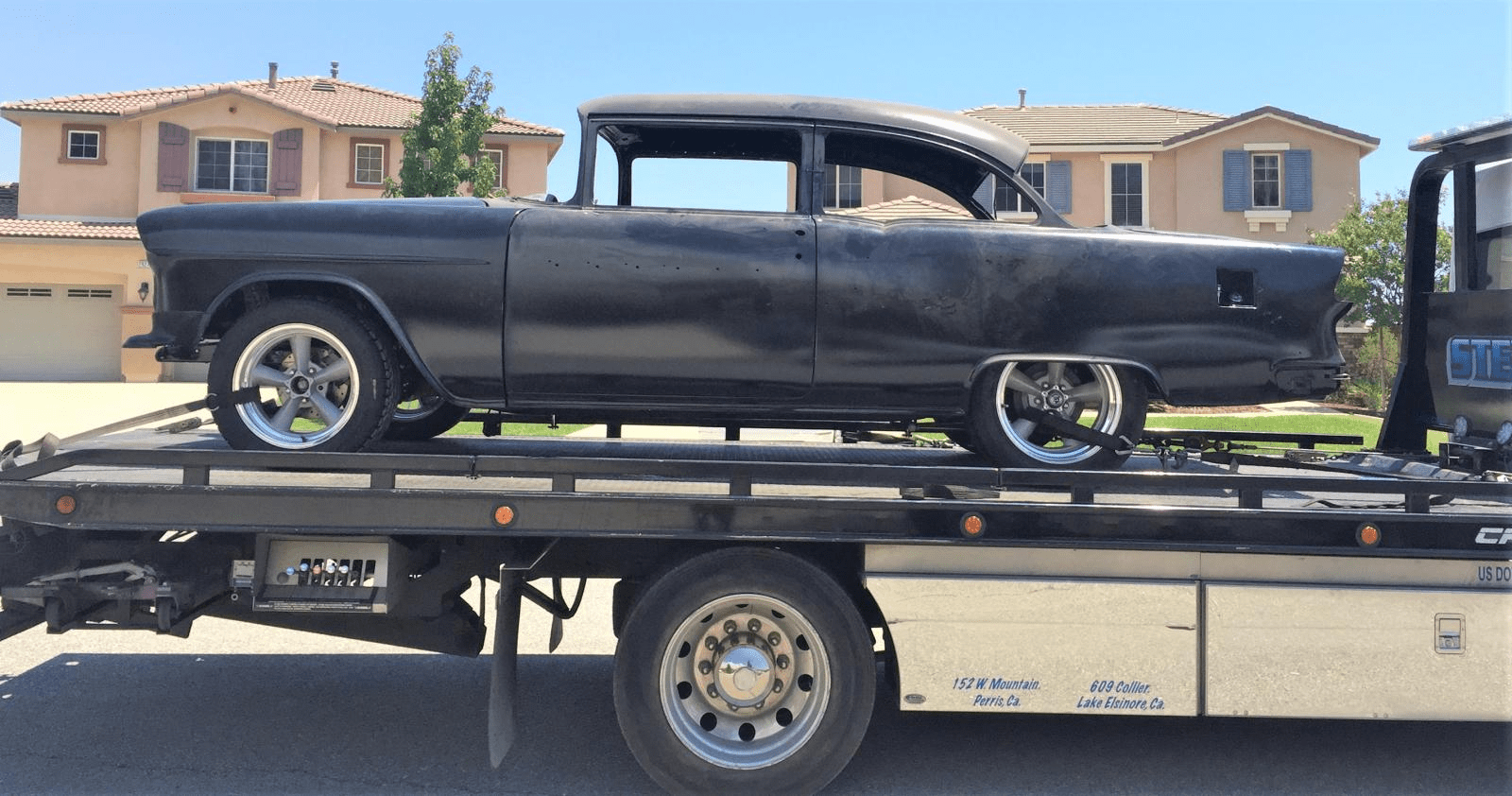
By Tommy Parry
Turn the clock back four decades to when Jeff had just picked up his very first car: a ‘55 Chevy 210. It was only a short fling with that car,, since he sold it shortly after he bought it to pay for college. After a degree, a good job, and fifty cars later, he got an itch to return to square one.
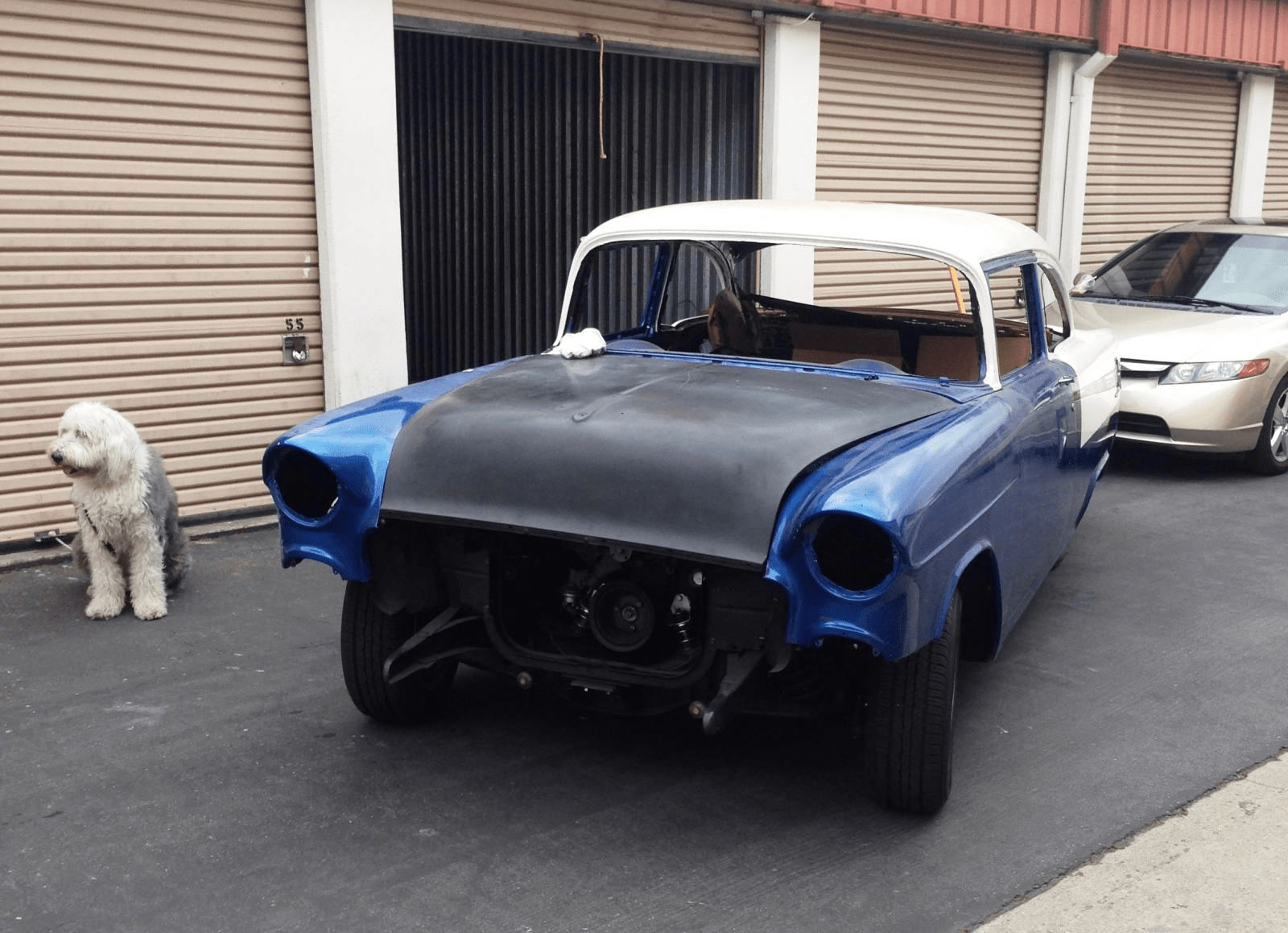
Courtesy of Craigslist, he came upon this two-door out of a storage facility just a few miles from his work. Jeff’s near-retirement years would be welcomed by a rust-free example of the car which introduced him to automobiles so long ago. This time, he intended to retain much of the original equipment while adding his own zest and a few modern goodies.
In addition to sporting a 350 and 700R4 gearbox, the Chevy arrived with a 9” Ford coilover suspension in the rear, Heidts tubular front control arms, disc brakes at all four corners, and a few bucketfuls of miscellaneous parts. Jeff wasted no time and took the car to work, where he began cutting the rear wells to allow for a little more rubber out back.

Then Jeff turned his attention to the opposite end of the car. There, he spent some time smoothing the firewall, eliminated the battery box, scrapped the wiper motor, and plugged a few holes. That area was the epicenter for the sanding and application of filler that covered the rest of the Chevy’s bulbous body shortly thereafter. As he couldn’t shake the images of flat-black hot rods of his youth, he blocked the car down then bought himself a color to take him back to simpler times.
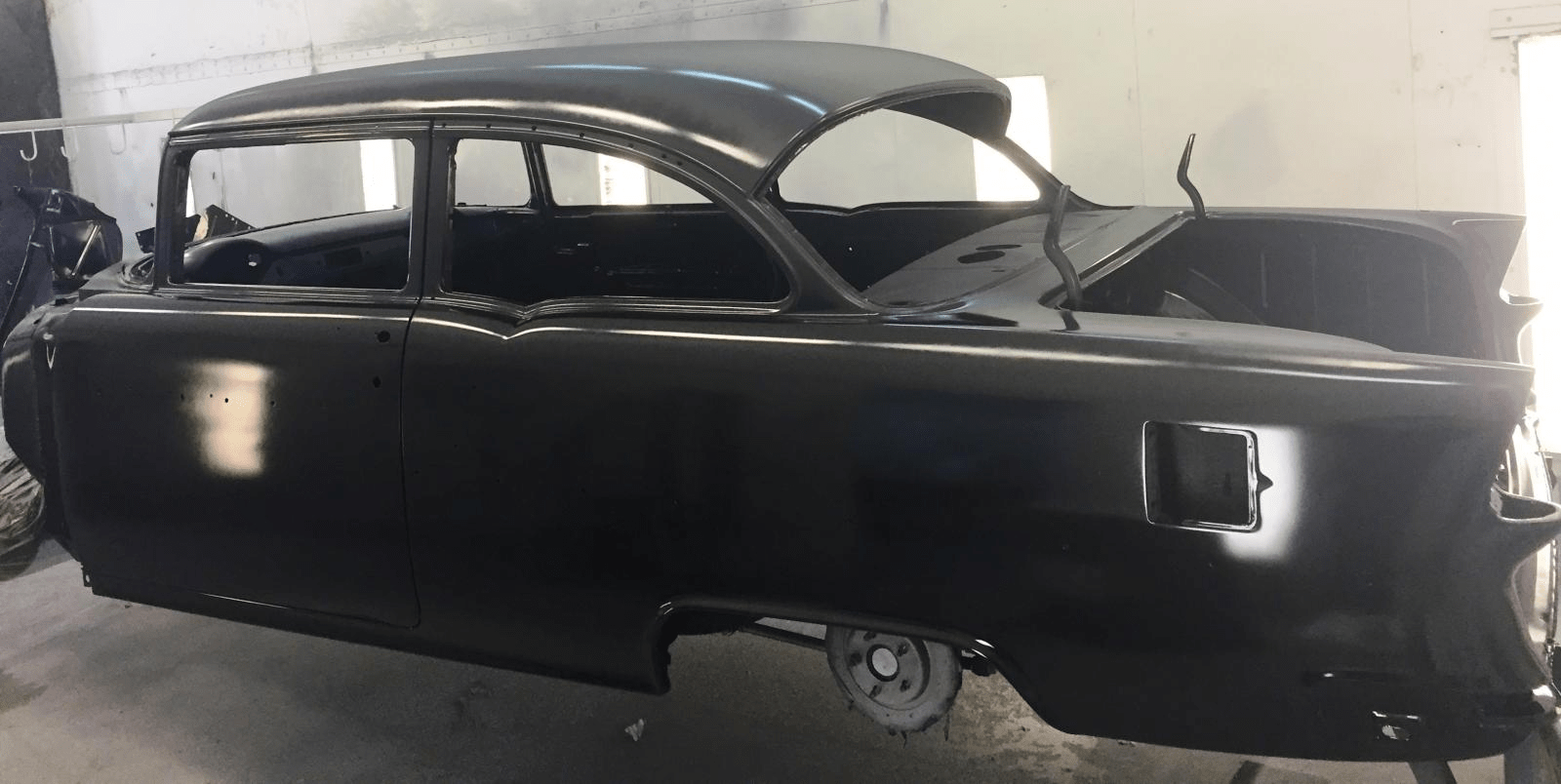
Then came time for a new powerplant: an LS1 from a 2000 Camaro Z/28. Wanting to make another nod to his teenage hotrodding years, he stripped the silver from the bellhousing and painted it orange—just like the shade he’d put on the powerplant.
So much of the swap was done by retaining as many OEM parts as possible—slave and master cylinders included. In fact, the brake master cylinder used is a late-model unit; a useful addition if he chooses to take his car out into the middle of nowhere.
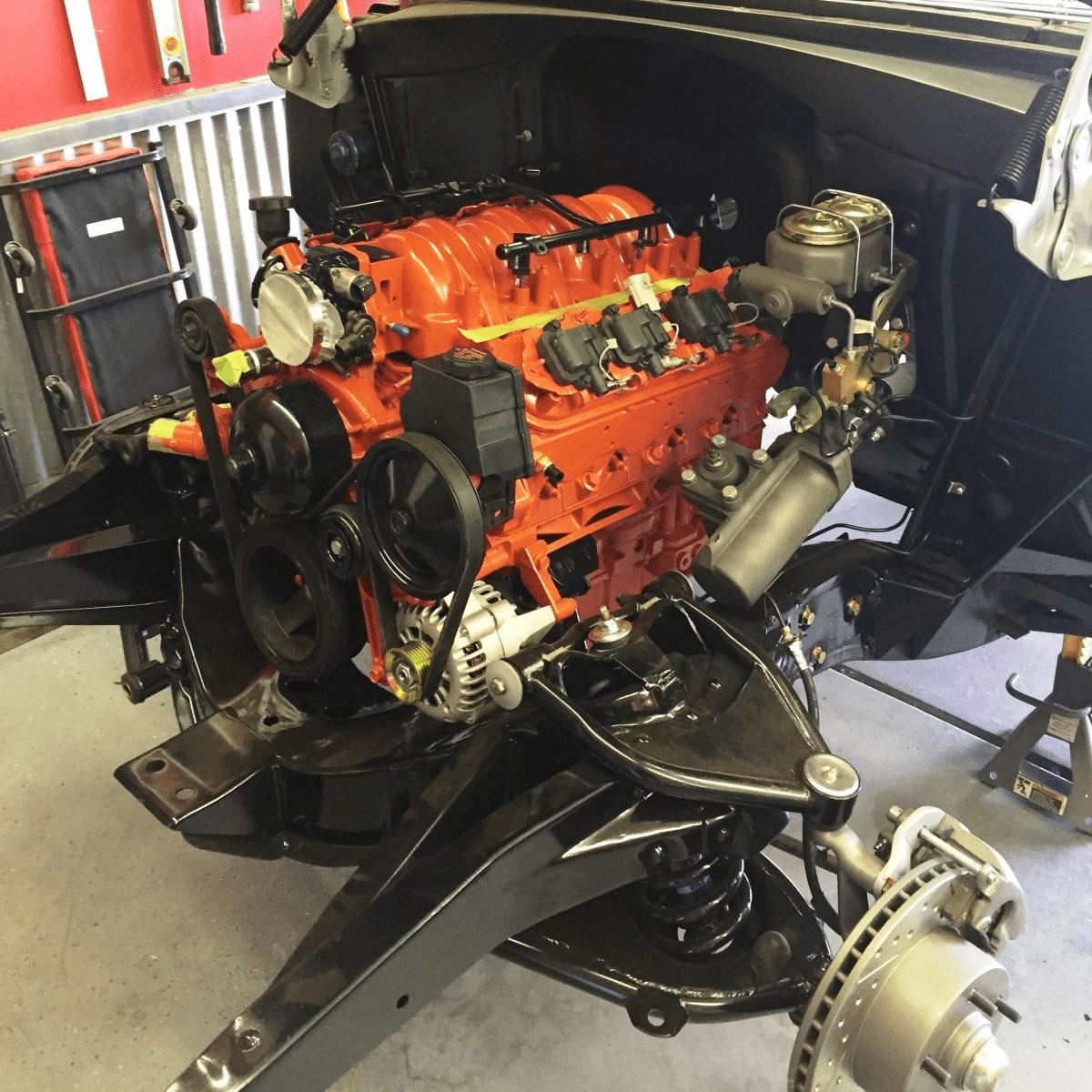
To help deploy that power to the pavement, Jeff opted for a set of wider wheels. Vintage Wheel Works V40s measuring 18x9.5” in rear and 17x8” in front, under which he mounted Currie drilled rotors, did the trick. The front suspension was then stripped off, rebuilt, and reinstalled on a newly painted front frame. Topping off these steering changes was a new ‘500’ series power steering unit.
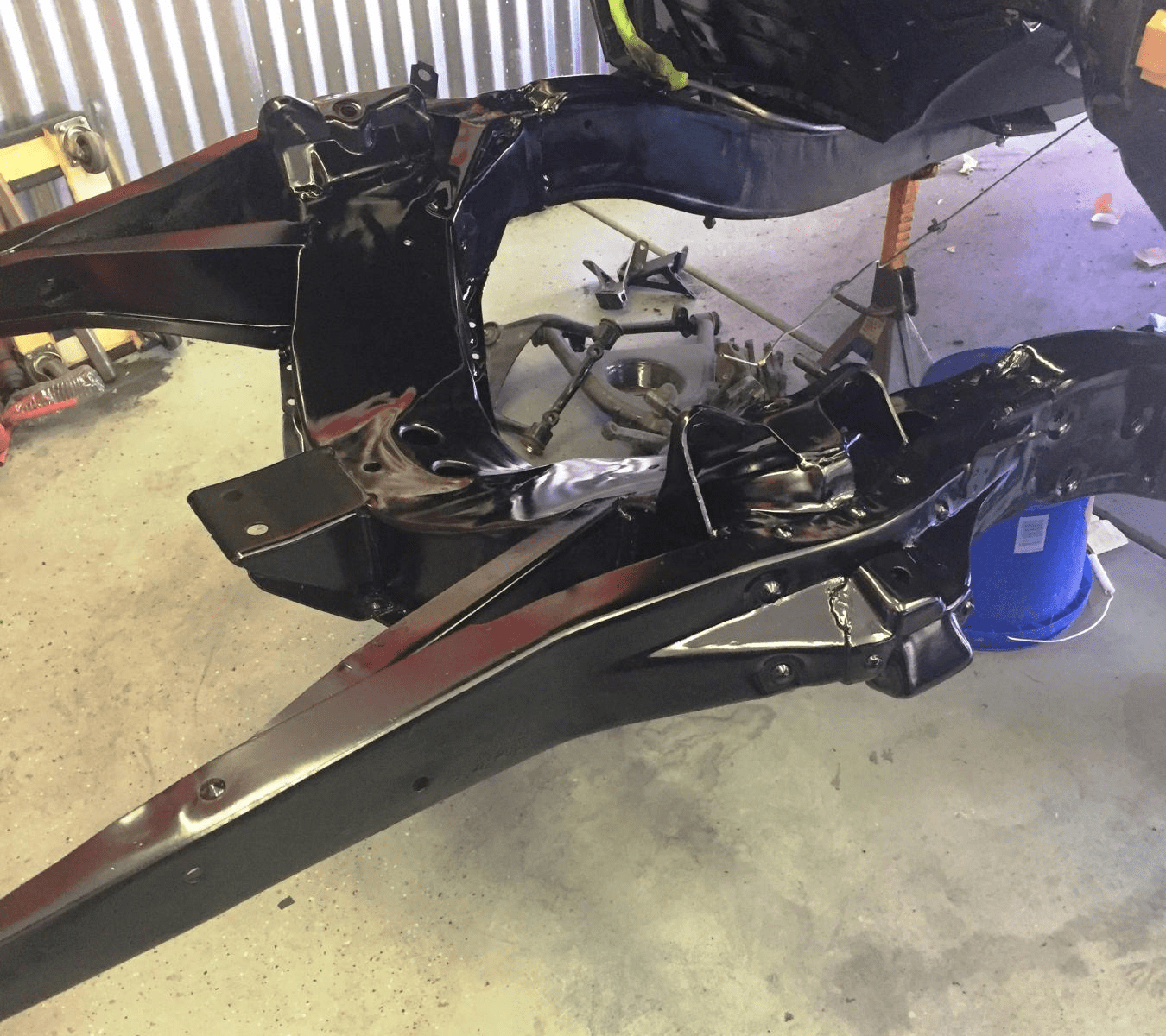
Inside, he aimed to twist several different influences into one cohesive unit. Included among those bits were '65 Thunderbird seats, '65 Impala console, a ‘69 Camaro steering wheel, and a new Ididit Tilt column.
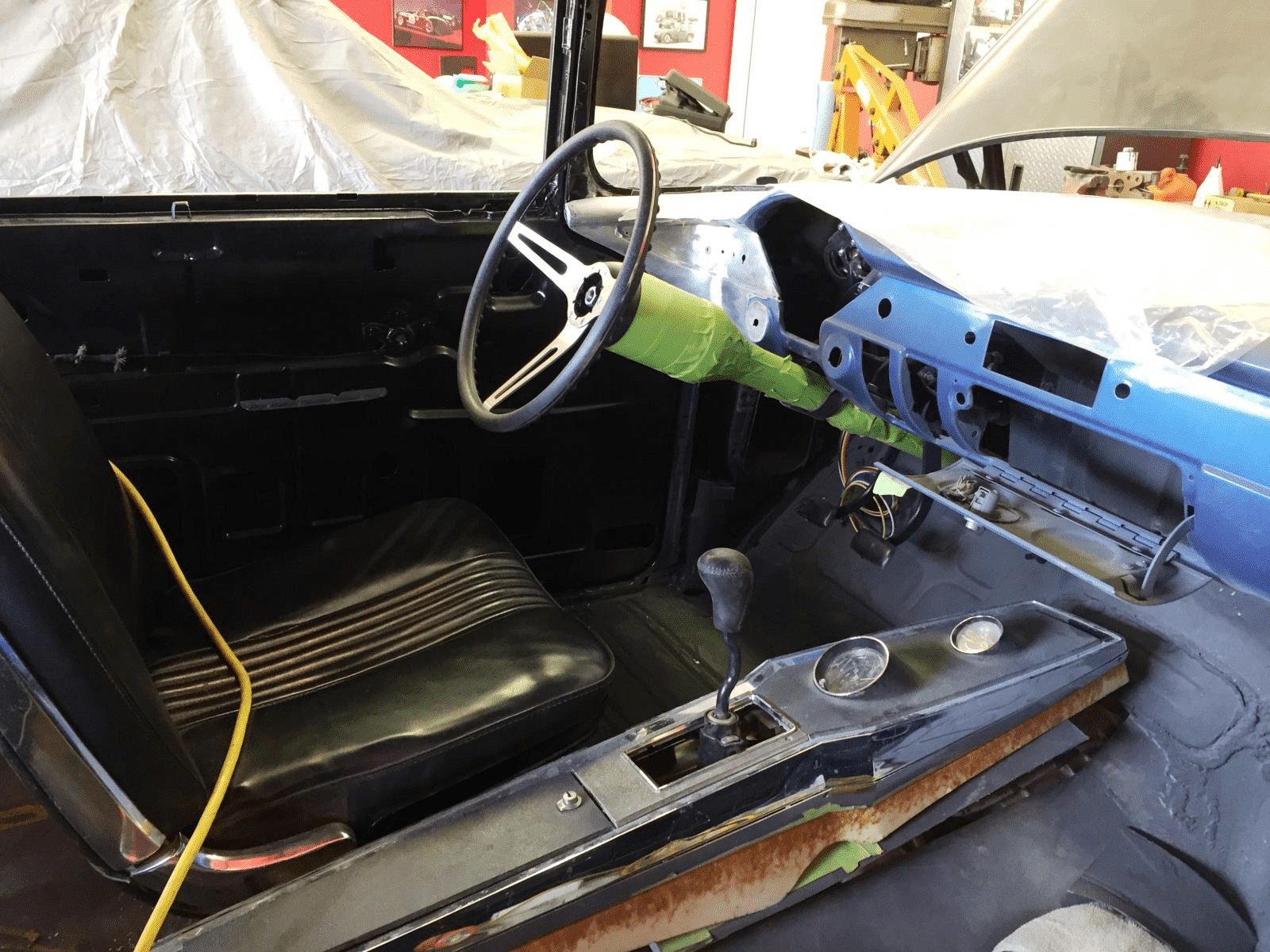
He continued developing the dash by welding the glovebox door and ashtray together to make one big opening. After he coated it in satin black, it looked menacing.
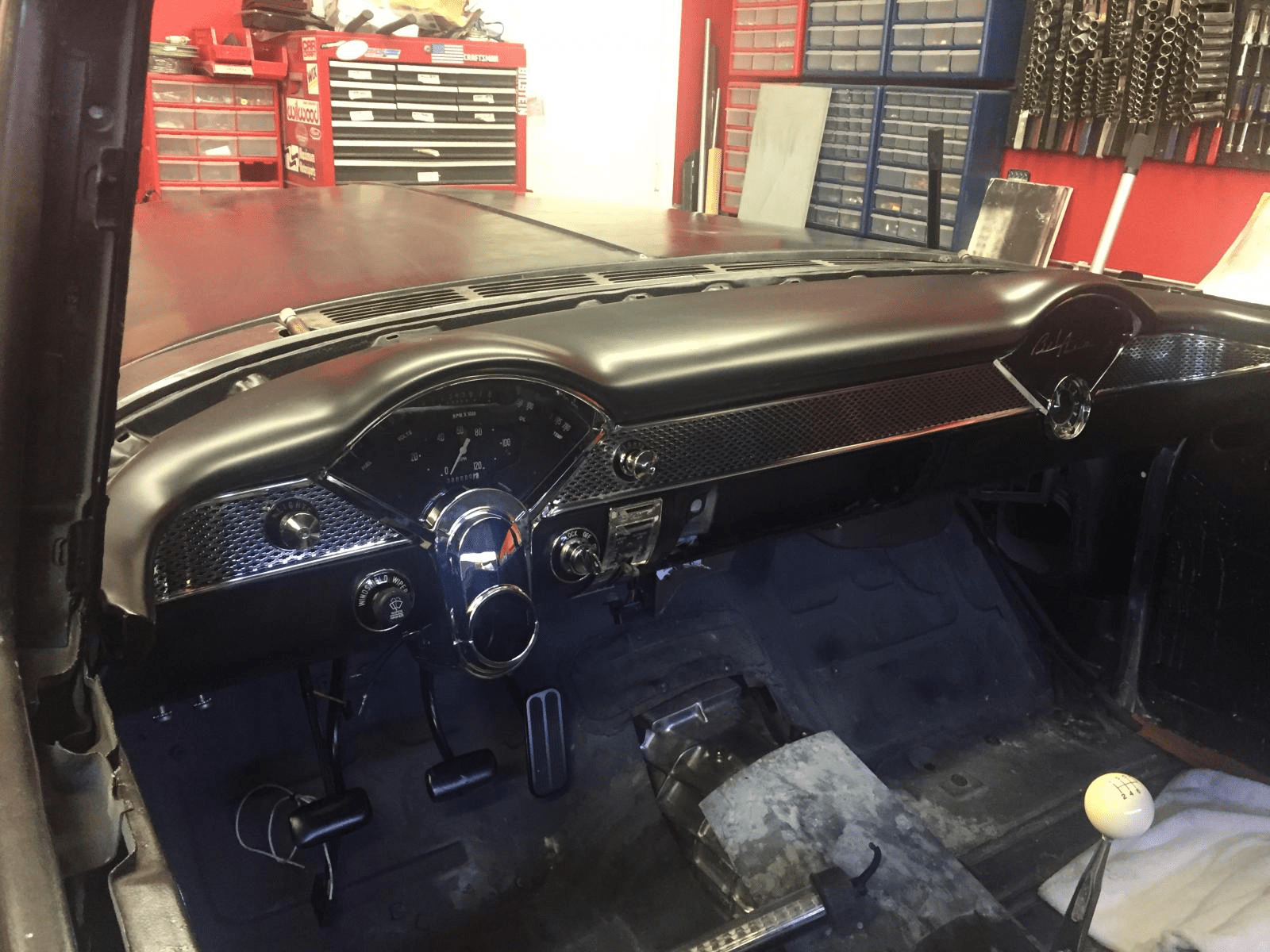
After a bit of buttoning up, the Chevy was looking like a real car again. It drove, stopped, steered, shifted, and started without issue. Most of the mechanical heavy lifting is over, but Jeff has high standards which he intends to meet. His expertise, wisdom, and ingenuity should see him through the remainder of this project. To see where this beautiful Chevy ends up, you can visit Jeff’s thread here.
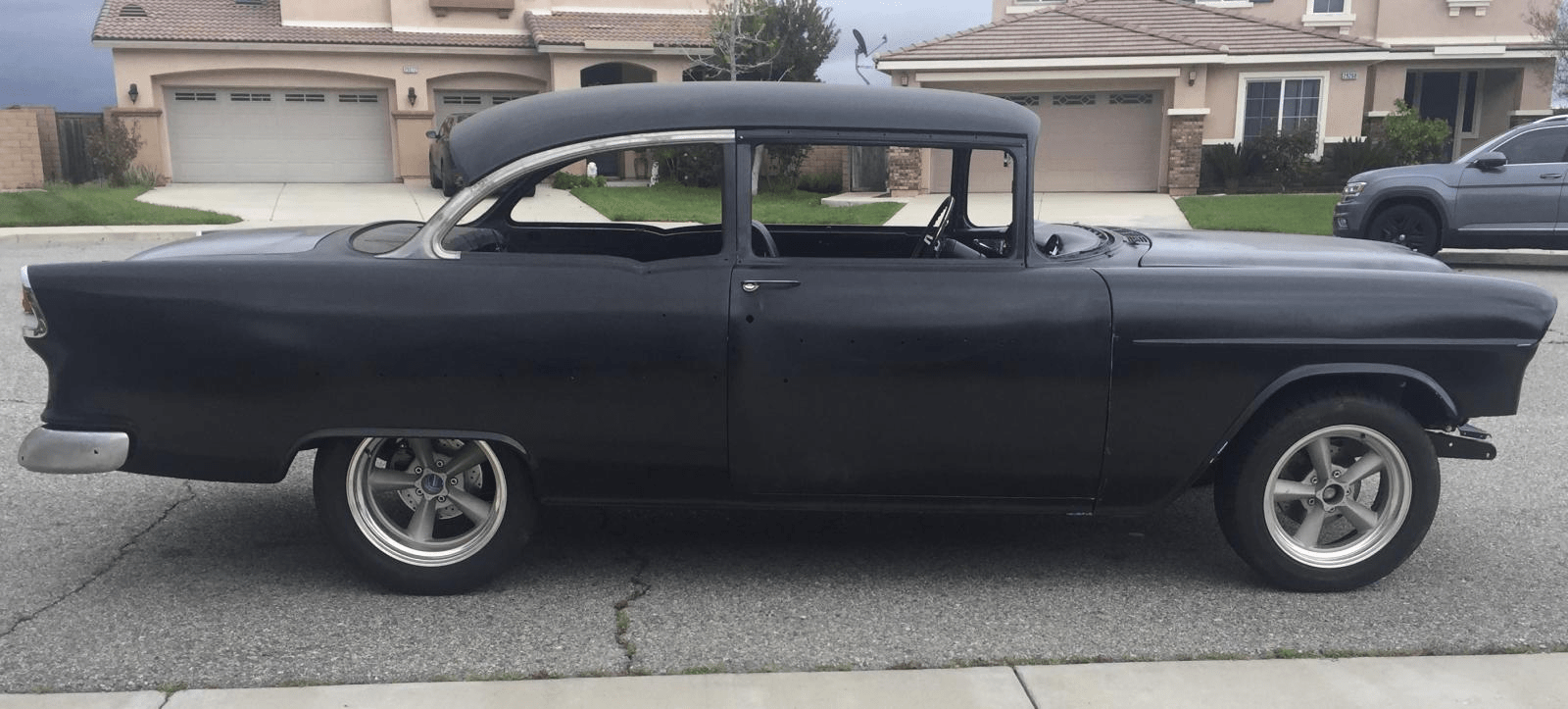
Gallery Type:
thumbimage:

Feature on homepage:
home body feature
